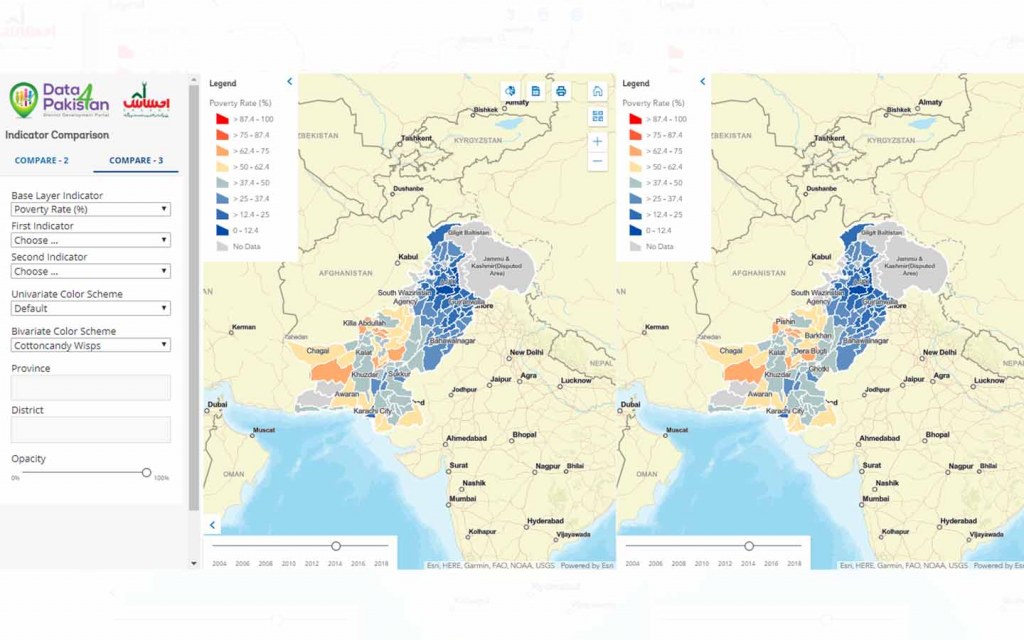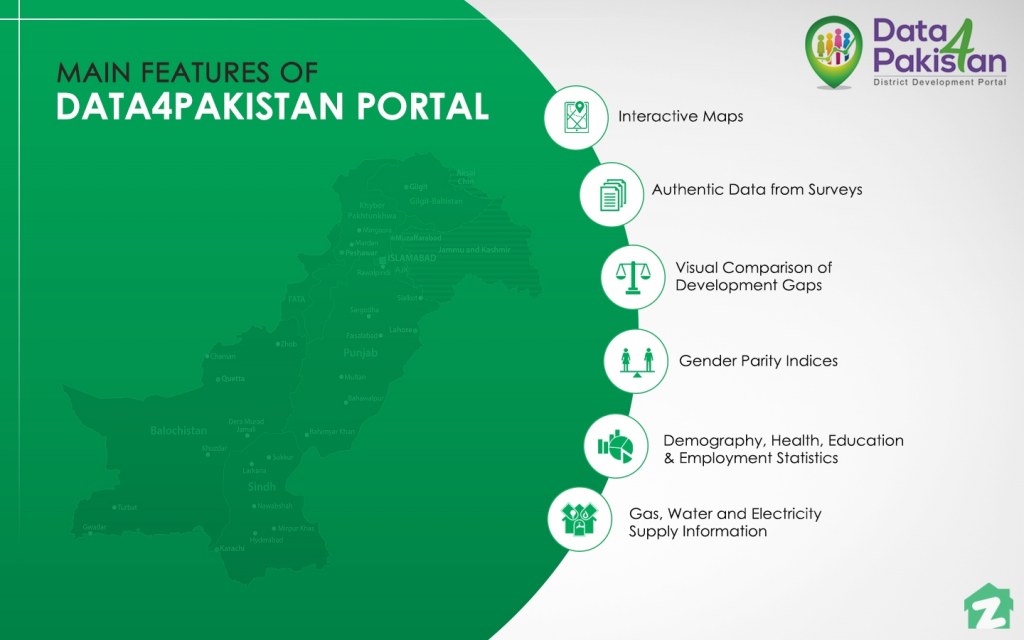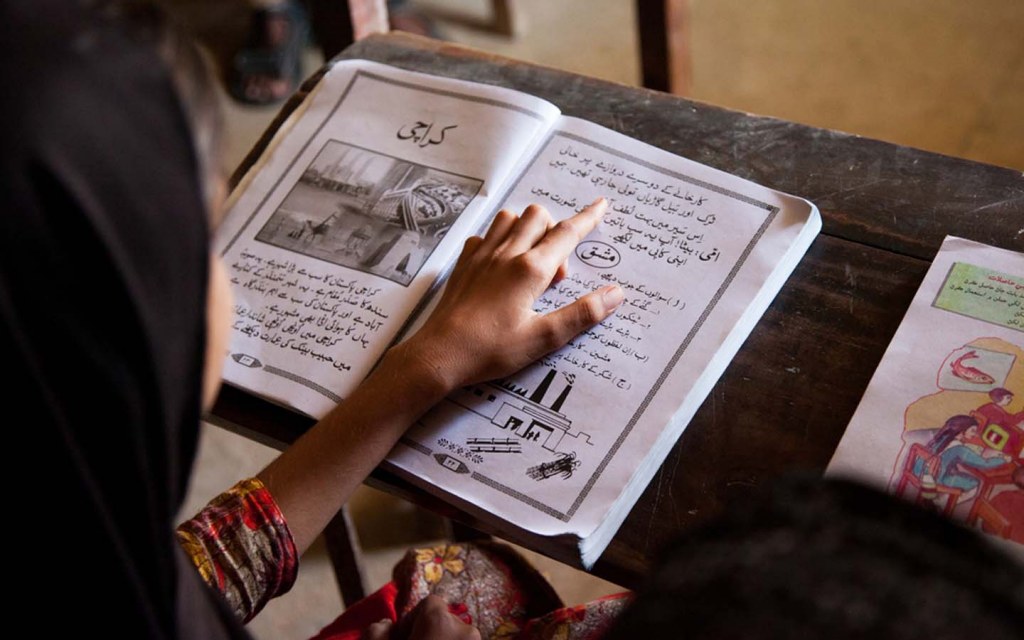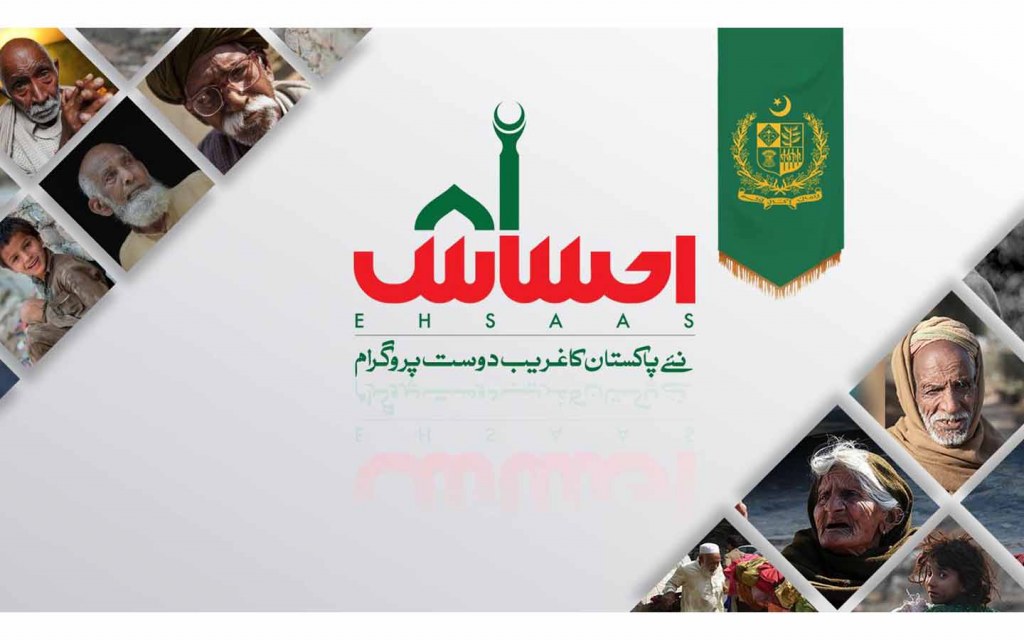IN THIS POST:
– About Data4Pakistan portal
– Features of Data4Pakistan portal
– Key development indicators
– Navigating the portal
– Ehsaas & other initiatives
Prime Minister of Pakistan Imran Khan recently launched the first-of-its-kind District Development Portal called Data4Pakistan under his government’s flagship Ehsaas Programme. The interactive Data4Pakistan portal, which is available for all to use, is designed to visually represent the development gaps in different districts across the country so that high-level policymakers can identify the areas in dire need of funding. This will reportedly allow for an impartial and transparent allocation of the development budget.
As per the official government website, the newly-introduced Ehsaas District Development Portal aims to alleviate poverty in Pakistan and assist the government in uplifting the downtrodden and impoverished segment of the population by spending the development funds according to the people’s needs.
“It is my belief that a country where there is an ocean of poor people and few rich cannot make progress,” said the prime minister during the inauguration ceremony of Data4Pakistan portal held in the capital city of Islamabad.
The Data4Pakistan portal, which is a joint initiative of the Government of Pakistan and the World Bank, has utilized the data collected by Pakistan Bureau of Statistics (PBS) between 2004 and 2018 to provide vital information pertaining to different development indicators in each district. Although some of the districts on the portal only have statics available until 2014, the website claims the estimates for 2019-2020 will be updated shortly.
The portal can be accessed through the official website of Poverty Alleviation and Social Safety Division launched under the Ehsaas programme.
Let’s take a deeper look into the Ehsaas District Development Portal and learn a little bit more about its features, the key indicators, how to navigate it, and more.
About Data4Pakistan Portal

Data4Pakistan is a publicly-available portal that allows users to compare the base indicator and up to two additional indicators in different districts. You can even select entire provinces on the map or through the drop-down list in the navigation panel to view and compare the data. The default, meanwhile, is set to the entire country.
As of right now, the interactive portal has about 120 development and policy indicators for almost every district in Pakistan. Moreover, it currently has six rounds of data ranging from 2004 to 2018 – the last year for which the statistics are available.
It is important to mention that the Pakistan Bureau of Statistics acquired the data used by the government’s Data4Pakistan portal through its Social and Living Standards Measurement Surveys (PSLM) and Multiple Indicators Cluster Surveys (MICS).
According to the government website for the portal, the next update will also include the 2018-2020 MICS surveys for Sindh, Baluchistan and Gilgit-Baltistan.
Main Features of Data4Pakistan Portal

The Data4Pakistan portal splits the screen into two interactive maps and allows users to select as many as three indicators (including a base layer indicator). The estimates available on the site are collected through authentic surveys and visually compare the development gaps between districts. The data also includes gender parity indices, statistics related to demography, health, education and employment along with information about gas, water, electricity, sanitation and other key utilities.
The navigation panel on the left-hand side presents users with two options: ‘Compare 2’ and ‘Compare 3.’ If you select ‘Compare 2,’ you’d be given an option to choose the Base Layer indicator, an additional indicator, univariate colour scheme, bivariate colour scheme, province, district and opacity. In case you select ‘Compare 3,’ you’d be allowed to enter an additional indicator for comparison.
Key Indicators on the Data4Pakistan Portal

Here are the key poverty and development indicators available on the Ehsaas District Development Portal to alleviate poverty in Pakistan.
- Poverty rate
- Demographics (household size and child dependency ratio etc.)
- Housing
- Access to drinking water
- Proper sanitation facilities
- Availability of electricity, gas and other utilities
- The employment rate in industrial, agricultural and other sectors for both males and females
- Child labour rate
- The school enrollment and the literacy rate for both males and females
- Gender equality, empowerment and access to justice
- Maternal health and child care
- Vaccination data
- Hygiene behaviours
Please note that each of these key indicators comprises different categories.
Navigating the Data4Pakistan Portal
The portal for Data4Pakistan to alleviate poverty is extremely user-friendly. The interactive map launched by the Government of Pakistan allows users to compare up to three indicators side by side on the screen.
Here’s how you can navigate the portal in 8 easy steps.
Step 1: Choose between ‘Compare 2’ and ‘Compare 3’ on top of the left-hand navigation panel
Step 2: Click on the field under the title ‘Base Layer Indicator’ and select the type of comparison from the drop-down menu. For the convenience of its users, the portal has already set the Poverty Rate as it defaults base layer indicator.
Step 3: Select the second (and third, if available) indicator from the drop-down menu in a similar manner
Step 4: Select colour schemes
Step 5: Select a province (optional)
Step 6: Select your district(s) (optional)
Step 7: Select opacity. The default is set at 100 percent
Step 8: Select the year for each of the two maps
The legends for selected indicators appear on the left of the split screens. Moreover, moving your cursor over the districts on the map will provide you with the information about the selected indicators in the form of a popup message on the lower-right of the screen. The government’s Data4Pakistan portal also allows you to zoom in to each district for the neighbourhood and street views.
Furthermore, the customized maps can be both downloaded and printed. You can also download the original underlying data by clicking on the ‘Download Shapefile’ icon.
The Ehsaas Programme and Other Government Initiatives

The widely-hailed Ehsaas initiative is an umbrella programme that incorporates the latest technology and tools to produce data-driven solutions for the betterment of the poor and underprivileged in Pakistan.
Some of the most prominent welfare programs launched under Ehsaas Programme and overseen by the federal Poverty Alleviation and Social Safety Division include Ehsaas Amdan Programme, Ehsaas Kafalat Programme, Ehsaas Scholarship Programmes and Ehsaas Langars.
Apart from this initiative, the Government of Pakistan has also drawn appreciation for its Kamyab Jawan Programme that focuses on teaching vocational skills and creating more employment opportunities to the youth of the country.
The government has also launched a few mobile applications to facilitate citizens over the past couple of years – including the Pakistan Citizen Portal, Device Verification System (DVS) and Report Corruption. You can find out more about top government apps in our detailed guide on the topic.
Meanwhile, please note that we’ll be updating this blog with more information as it is released. Therefore, make sure to check back frequently. Also, the information in this guide has been taken from the official Data4Pakistan portal and is subject to change.
Stay connected to Zameen Blog, the best lifestyle and real estate blog in Pakistan, to learn more about the government’s latest initiatives. You can also send us your queries on blog@zameen.com. In addition to that, don’t forget to subscribe to our newsletter to receive the updates about the property and construction sectors in the country.
Note: The banner image is taken from a video uploaded on the official website for Data4Pakistan.



